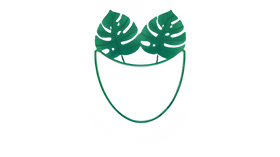How To Care For Your Tradescantia Nanouk
So you just got a tradescantia nanouk, or, you're thinking about getting one. Congratulations! The tradescantia nanouk is a great choice, and I'm sure you'll grow to love this plant. The nanouk, also known as the Wandering Jew plant, is famous for its stunning purple/pink striped leaves. Tradescantia is a genus of plant, and the nanouk is one of the most well known in the group.
It's popular for good reason, as unlike most plants that look this beautiful, it's surprisingly easy to care for. Of course, like most house plants, easy doesn't mean "I'll just throw it in the corner and it'll thrive" easy. But, it's not that hard, I promise!
In this guide I'll take you through how to best care for your tradescantia nanouk and how to get rid of common issues that you might face. After reading this, I'm sure you'll be ready to take on any challenges that come with turning your fledgling nanouk into a thriving giant!

Watering:
Water your nanouk when the top inch of soil feels dry to the touch. Ensure thorough watering, allowing excess water to drain out completely to prevent root rot. Reduce watering frequency during winter months when the plant's growth slows. Consistent moisture is key, but avoid overwatering, which can lead to yellowing leaves and root issues.
You can buy your own Tradescantia Nanouk from Happy Plant!
Soil: Use a well-draining potting mix for your Tradescantia Nanouk, such as a blend of regular potting soil with added perlite or sand. This ensures proper drainage and prevents waterlogging, which can lead to root rot. Repot the plant every 1-2 years to refresh the soil and provide space for growth.
Humidity: The Tradescantia Nanouk prefers moderate to high humidity levels. It can tolerate average indoor humidity but thrives in more humid conditions. To increase humidity, mist the plant regularly or place it near a humidifier. Avoid placing it near heating vents or drafty windows.
Temperature: The nanouk prefers temperatures between 60-75°F (15-24°C). It can tolerate slightly cooler temperatures but should be protected from drafts and sudden temperature changes. Avoid placing it near air conditioning vents or cold windows during winter.
Fertilizer: Feed your Tradescantia Nanouk with a balanced, water-soluble fertilizer diluted to half strength every 4-6 weeks during the growing season (spring and summer). Reduce feeding during the fall and winter months when the plant's growth slows down.
Pruning: Prune your Tradescantia Nanouk regularly to maintain its shape and encourage bushier growth. Pinch back the tips of the stems to promote branching. Remove any dead or yellowing leaves to keep the plant looking healthy and tidy.

How To Fix Common Tradescantia Nanouk Issues:
Brown Leaf Tips:
This can occur because of low humidity or underwatering the plant. To fix this, increase humidity by misting the plant regularly or using a humidifier. Ensure the plant is watered adequately but not overwatered.
Pests(Spider Mites, Aphids, Mealybugs):
Quick Fix: Regularly inspect the plant and remove pests with a gentle spray of water. Treat with insecticidal soap or neem oil as needed. Ensure good air circulation around the plant.
Fading Colors:
Quick Fix: Place the plant in bright, indirect light. Avoid direct sunlight, which can bleach the colors.
Root Rot:
Root rot on your tradescantia nanouk comes from overwatering. To fix this remove affected roots and repot the plant in fresh, well-draining soil. Adjust watering habits to allow the soil to dry out between waterings.
It might seem like a lot, but you got this! The tradescantia nanouk is a must have in any plant lover's collection. It's beautiful pink and purple leaves, with their elegant stripes will make this plant pop in any room. With the right combination of watering, fertilizing, and overall care, this plant will not only survive but THRIVE in your home. Happy Planting!


